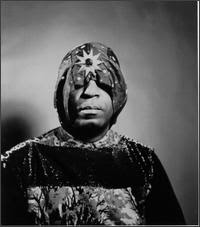
The other day I finished reading Natsuo Kirino's bleak novel about a Japanese H.S. student who is on the run after killing his mother and subsequently befriends a group of four girls after stealing one of their cell phones. Entitled "Real World," Kirino is clearly attempting to imagine a world inhabited by young people in urban Japan that has become frighteningly incoherent through fragmentation of the identity through consumption, intensive aspirational studying, and strained family and peer relationships. One of the high school girls, Terauchi, finally kills herself, feeling herself estranged in a fundamental way from society, unable to "survive" by pretending to meet the expectations of those around her. "In the reality of everyday occurrences I've had to submit to people in order not to lose them," she writes in a letter to her friend before jumping from the roof of a neighboring apartment building. She ultimately makes herself "real" by becoming something that can't be "undone" in her own philosophical logic, a permanent disappearance. The contradictory resolution is exactly where we are left after the boy's, nicknamed Worm, initial attempt to somehow attain the real and manage it's demands by murdering his superficial, deluded mother. The "real world" becomes something irreconcilable with the fantastic multiplicity the kids' lives contain.
A girl I worked closely with for two years while doing research habitually created new names for herself with which she would establish new online identities: shopping profiles on popular fashion and furnishing websites, email addresses, and user names for media aggregation sites like YouTube. Part fantasy evasion, part calculated identity protection, this girl inhabited a realm in which the "real" was defined by its very instability and porosity with her imagination. Her strategy is hardly unfamiliar. The concluding voice of Toshiko, one of the circle of friends, in Kirino's "Real World," describes her intention to not use a fake name anymore when she goes to sing karaoke. She looks down at her real name penned formally by her dead friend on her final letter, beginning to cry, confronted with two claims to the real: the physical erasure of her friend, and the social fact of herself as daughter and friend signified by her birth name.
Is her grief made less volatile by asserting her social identity against the "fictional" one she chose for herself as screen against the overworked student she was in the "real world," feverishly preparing for college entrance exams late into the night at a crowded, competitive cram school? The universe that contains and produces Kirino's young characters is one without possibility of change, or escape. Toshiko's only means to get out is through temporary possession of a persona that is never able to fully possess her, so she finally decides to refuse its frail, temporary sanctuary. Worm, on the other hand, chose the transformation that cannot be "undone"--murdering his mother--and so permanently alters the "real" with its familial pressures and falsehoods.
The novel reminds me of the bodies subjugated to the shifting geography of social realities. The characters rarely share the same immediate physical space with their friends. Most of their interactions take place through cellphone exchanges. Parents occasionally intrude, but are repulsed. Classmates are hurried past, and the crowds and lone strangers of western Tokyo are ignored and actively made to disappear.
The story leaves me empty, pondering our own futures and what we claim to be our temporal inheritance.



0 件のコメント:
コメントを投稿